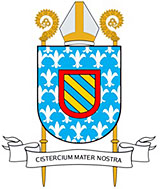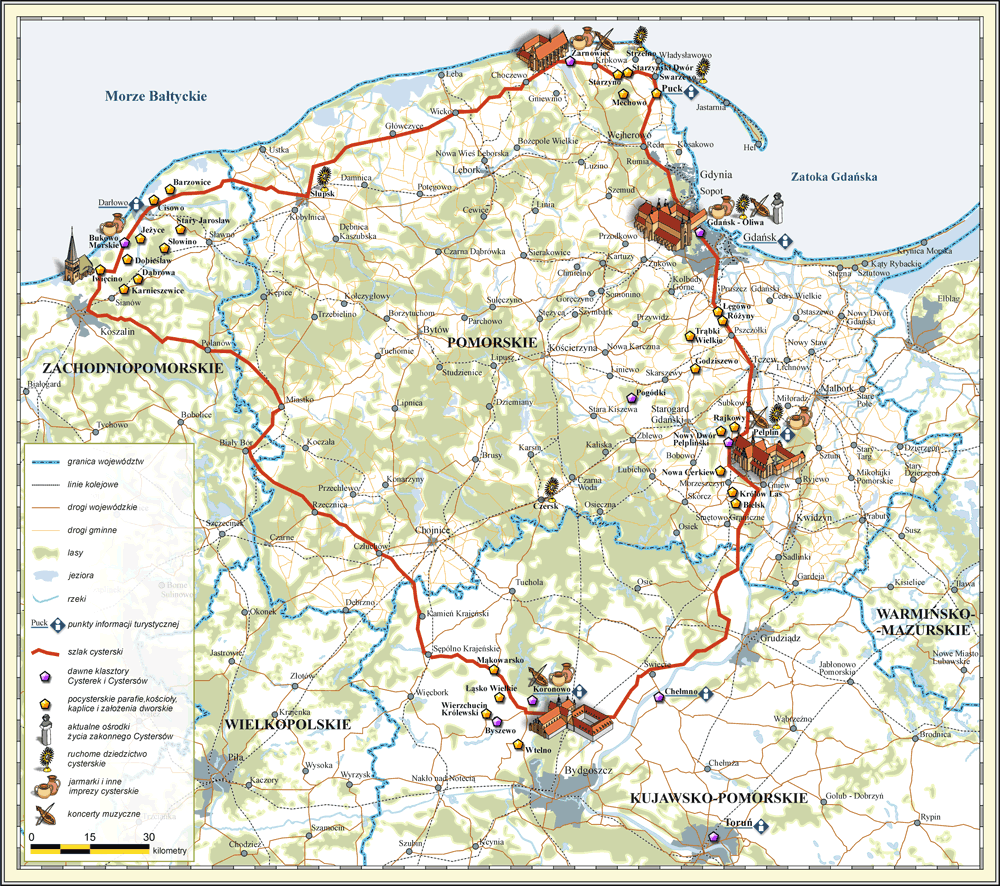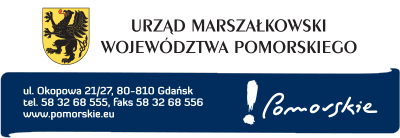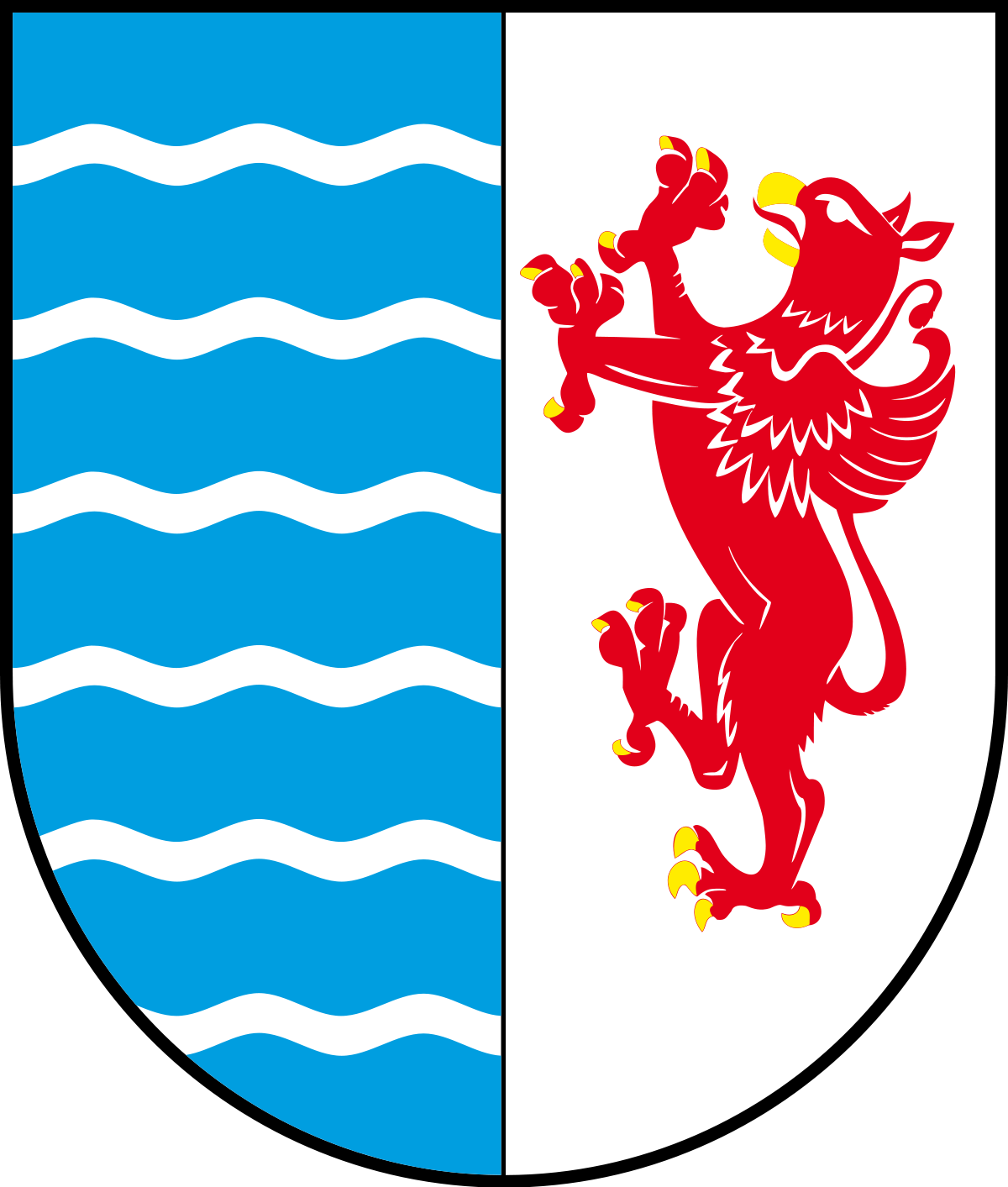 The origins of the Order date back to 1098, when at Citeaux (Burgundy, near Dijon) Robert of Molesmes founded the Sacer Ordo Cisterciensis (abbreviated OCist.) – the Cistercian Order – with its origins in the Benedicine Order. It was a response to the need for a renewal of monastic life in the medieval Church. The essence of the Order is the renewed spirituality of the original rule of St Benedict of Nursia. On 19th of October 1100, Pope Paschalis II approved Citeaux as a separate, renewed Benedictine monastery. In 1119, Pope Calixtus II approved it as a New Order. The first four branches derived from Citeaux were monasteries established only in France: La Ferté (1113), Pontigny (1114), Clairvaux and Morimond (1115). Of the last two originate the filial lines of the orders in the Polish lands. The Cistercians owe their greatest spiritual development to the Order’s Chief mystic, St Bernard, later Abbot of Clairvaux (1112-1153).
The origins of the Order date back to 1098, when at Citeaux (Burgundy, near Dijon) Robert of Molesmes founded the Sacer Ordo Cisterciensis (abbreviated OCist.) – the Cistercian Order – with its origins in the Benedicine Order. It was a response to the need for a renewal of monastic life in the medieval Church. The essence of the Order is the renewed spirituality of the original rule of St Benedict of Nursia. On 19th of October 1100, Pope Paschalis II approved Citeaux as a separate, renewed Benedictine monastery. In 1119, Pope Calixtus II approved it as a New Order. The first four branches derived from Citeaux were monasteries established only in France: La Ferté (1113), Pontigny (1114), Clairvaux and Morimond (1115). Of the last two originate the filial lines of the orders in the Polish lands. The Cistercians owe their greatest spiritual development to the Order’s Chief mystic, St Bernard, later Abbot of Clairvaux (1112-1153).
The centralised authority, the dependence of individual abbeys and the annual meetings of abbots (an organisational innovation) at the general chapter in Citeaux became the basis for the resilient spatial spatial development of the Cistercians throughout Europe after 1120: in 1123 at Germany; in 1129 in the British Isles; in 1131 in Switzerland; in 1132 in Belgium and Spain; in 1135 in Austria; in 1142 in Ireland. The first monasteries in the Polish territory were established around 1153. It was the Cistercian Order that constituted one of the first institutions connecting diverse Europe.
The possibility of exchanging views and information from almost the entire continent made it possible to learn about the conditions of Cistercian activity in different countries and thus to improve forms of management. Thanks to innovative organisational solutions, as early as in the 13th century Cistercians owned almost 742 abbeys. They were spread across the parts of Europe under the influence of Latin culture, regardless of political, ethnic or national divisions. The extraordinary Cistercian diligence, entrepreneurship organisational skills and constant refinement of the working tools contributed, in addition to perpetuating the faith and spreading the culture of St Mary, to promoting agriculture , livestock breeding and the development of crafts. Created thanks to development of new land, surplus production has resulted in the development of trade and thus a market economy.
The original principles of Cistercian life were set out in the Exordium Parvum and Carta Caritatis, in the writings of Bernard of Clairvaux, and then concretised in the statutes of the Order’s general chapters. Charity, humility and fidelity to monastic ideals shaped the monastic attitude of the Grey Monks. Austerity and simplicity in the service of God and man through prayer and work is reflected in the Cistercian motto ‘ora et labora’. It also shaped the monks’ daily routine, the management of the monasteries and the economic functioning of the abbeys, so that each was economically independent and fully met the needs of the monastic community. So in the Cistercians fertile valleys the land was cultivated, animals and fish were raised, and all these goods were carefully processed. The Cistercians were also involved in crafts and trade. They owned numerous library collections and developed literacy and education at European universities.








